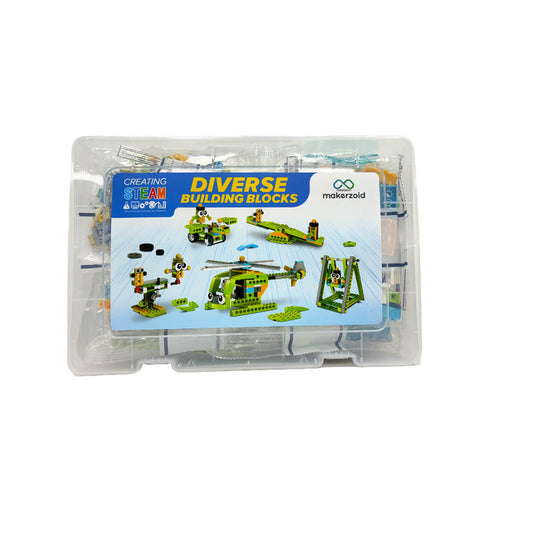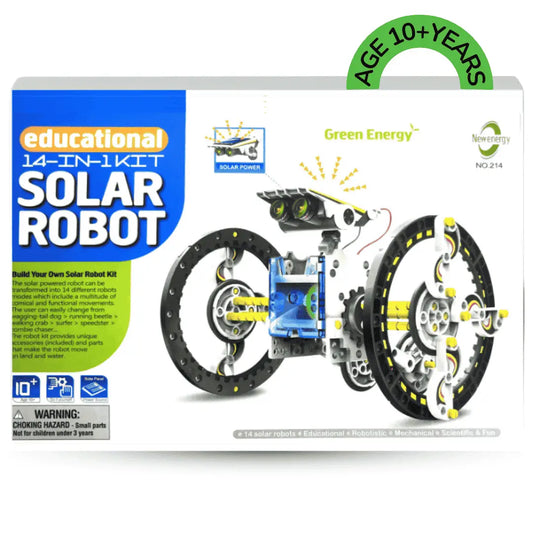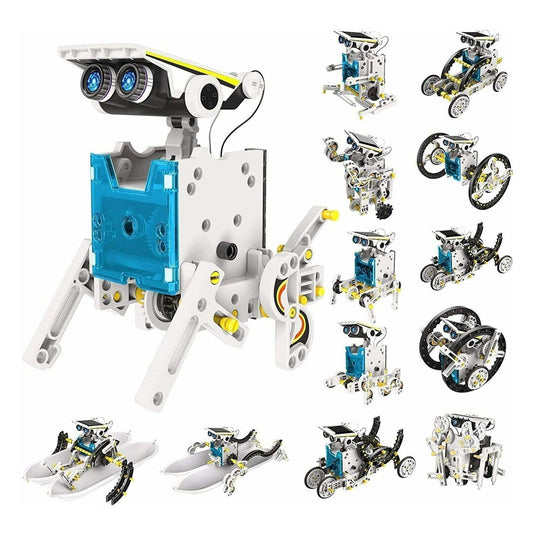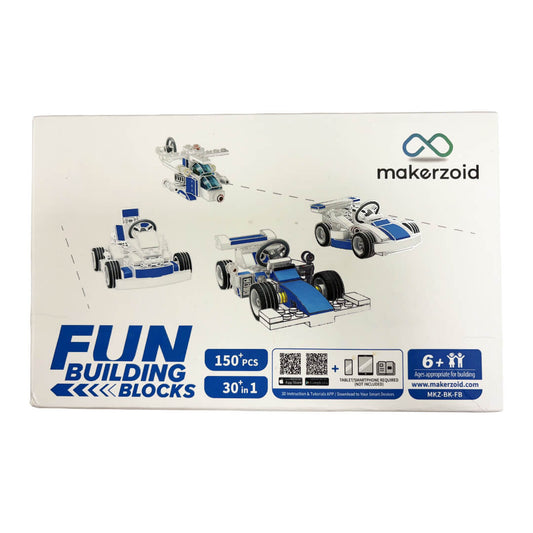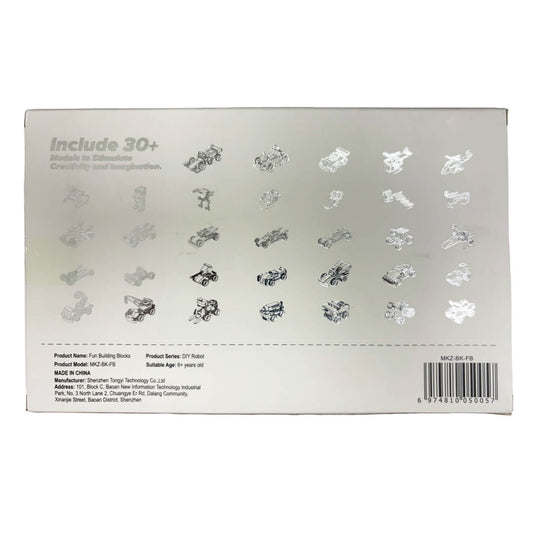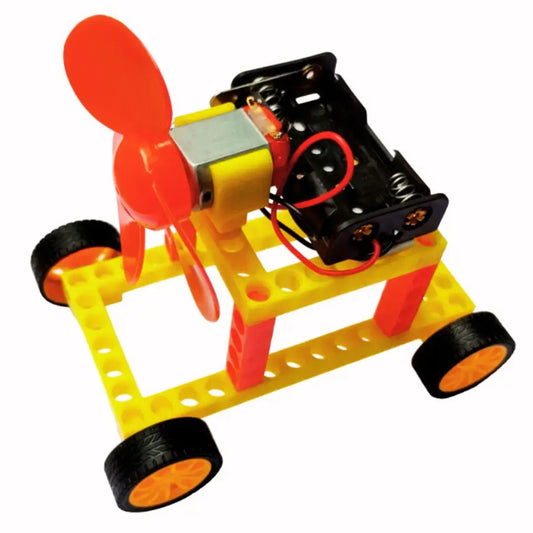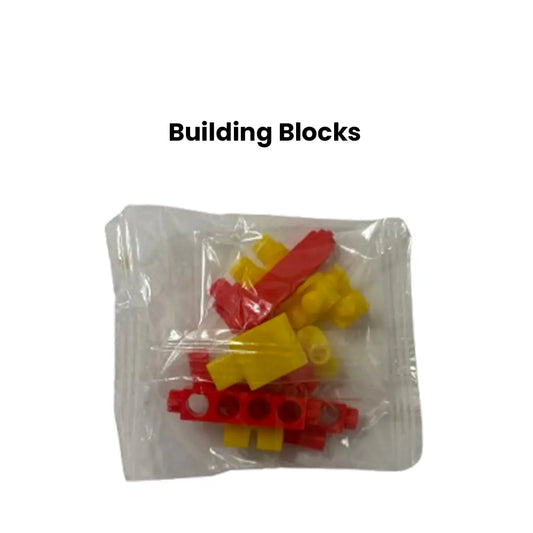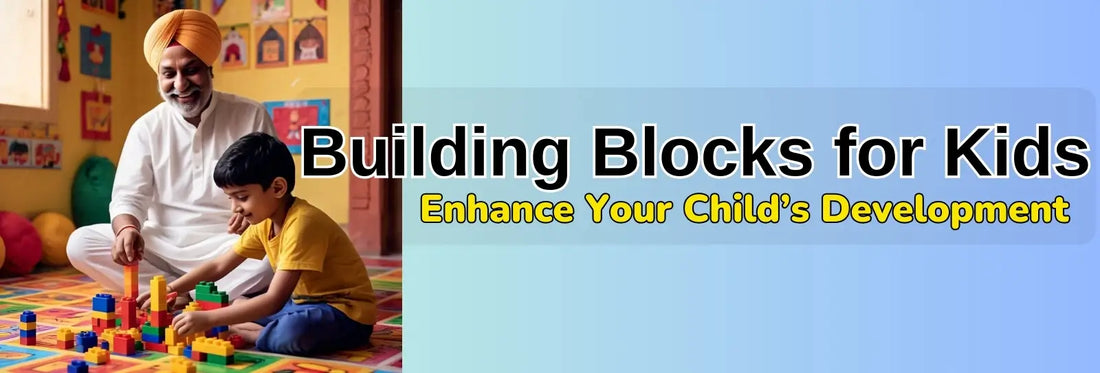
Building Blocks for Kids to Enhance Your Child’s Development
IEM RoboticsTable of Content
- Why is Blocks for Kids Beneficial?
- Babies (6–12 months): Discovering the Fundamentals
- Toddlers (1–3 years): The Builders in Training
- Preschoolers (3–5 years): The Little Architects
- School-Age Kids (6–10 years): The Innovators
- The Lifetime Benefits of Blocks
- Tips for Parents: Making the Most of Block Play
- Conclusion
Blocks are more than just toys, they are little tools that help your child grow and get creative. Blocks play a massive role at every stage, whether it's your baby's first grab or your tween's complex designs. For babies, they help develop motor skills and explore different textures. As toddlers start stacking and sorting, blocks help with problem-solving and even early math. When they reach preschool, those building blocks become everything from castles to rocket ships, helping them build imagination, spatial skills, and teamwork. And as they get older, blocks become a platform for critical thinking, innovation, and even coding!
In this blog, let's dive into how blocks for kids help the kids at every age. Blocks are the simple and powerful way to support a child's growth, whether a kid is just starting to build a robot or already has created a design.
Why is Blocks for Kids Beneficial?
Blocks are the superheroes of the toy world. They’re versatile, affordable, and timeless. More than that, they grow with your child. These colorful little shapes do everything from developing motor skills to sparking creativity and problem-solving.
As parents, you want toys that keep your child entertained and help them learn. Here's a detailed information on the blocks by age so you can pick the perfect set for your little builder.
Babies (6–12 months): Discovering the Fundamentals
At this point, babies are all about discovery. The kids of this age love to grab, shake, and (let's be honest) chew on everything within their reach. The building blocks for kids offer great sensory exploration and motor development opportunities.
What to Look for:
● Soft Blocks Fabric or foam blocks: These blocks are ideal for small hands and curious mouths.
● Large and Lightweight Blocks: These are easy for babies to grip and reduce the risk of choking.
● Bright Colors and Textures: Babies are drawn to vibrant colors and varying textures, stimulating their senses and supporting early visual development.
How Blocks Help:
● Hand-Eye Coordination: Picking up and handling blocks helps babies refine their motor skills.
● Cause and Effect: Babies knock down stacks of blocks and this way they understand how their actions can cause things to happen.
● Sensory Development: Blocks' variety of colors, shapes, and textures engage babies' senses of sight and touch, enhancing sensory exploration.
Toddlers (1–3 years): The Builders in Training
Your toddler is ready to stack, crash, and create. It might get messy, but this is the stage where the real fun begins!
What to Look For:
● Stacking Blocks: Choose sturdy wooden or plastic blocks that are easy for toddlers to hold and stack.
● Interlocking Blocks: Larger LEGO-like building blocks toys are perfect for this age group, allowing them to connect and build quickly.
● Blocks with Numbers, Letters, or Shapes: These collections sneak in early learning by helping your toddler recognize letters, numbers, and basic shapes.
How Blocks Help:
● Problem-Solving: Toddlers start figuring out which building blocks stack best and how to balance them.
● Fine Motor Skills: Grasping, stacking, and arranging blocks strengthens their fingers and hands
● Imagination: What was once a simple tower can quickly turn into a house or a rocket ship in your toddler's mind.
● Early Math Skills: Counting blocks or sorting them by color and shape lays the groundwork for basic math concepts.
Preschoolers (3–5 years): The Little Architects
This is when the actual creative building begins. Your preschooler’s imagination will take center stage as they construct more complex structures.
What to Look For:
● Classic Wooden Blocks: These sturdy block games for kids are perfect for building bridges, towers, and other exciting creations.
● Magnetic Tiles: These allow your preschooler to build in both 2D and 3D, adding an extra layer of fun.
● Theme-Based Blocks: Sets that include animals, cars, or castles fuel imaginative play and storytelling.
How Blocks Help:
● Creativity: Through block games for kids, they can now build entire worlds—from houses to castles to space stations!
● Spatial Reasoning: Constructing complex structures helps your child understand balance and space.
● Social Skills: They’ll often collaborate with friends or siblings, learning to communicate and work as a team.
School-Age Kids (6–10 years): The Innovators
Your child is beyond stacking and ready for new challenges, problem-solving, and creative exploration.
What to Look For in building blocks for 7 year olds
● STEM-Focused Blocks: To spark interest in STEM, look for childrens toy blocks that involve robotics, circuits, or other engineering concepts.
● Complex Magnetic Sets: These sets allow your child to explore geometric shapes and intricate designs, further enhancing their creativity.
How Blocks Help:
● Critical Thinking: Following instructions for complex builds helps improve focus and problem-solving skills.
● Teamwork: Building with friends or family encourages collaboration and communication.
● Engineering Basics: Your child begins to understand how things fit together and how different structures work, introducing them to basic engineering concepts.
The Lifetime Benefits of Blocks
● Builds core competencies: Blocks give a child the ability to feel confident, creative, and thoughtful.
● Fosters free play: The kids will exercise their imagination and problem-solving ability.
● Cognitive and emotional development: blocks for kids play is an activity that can stimulate brain growth and resilience.
● Grow with your child. A small child may build simple castles, but an older one may make a robot.
● Classic: Blocks remain engaging to users of all ages, making a long-term purchases.
● Great for parents: Stacking and building can be fun activities for adults!
Tips for Parents: Making the Most of Block Play
Want to maximize the benefits of block play for your child? Here are some practical tips to make it fun, educational, and engaging:
● Choose the Right Blocks: Select age-appropriate building blocks toys that match your child’s developmental stage—soft blocks for babies, stacking blocks for toddlers, and complex building sets for older kids.
● Start with Simple Challenges: Encourage your child to build basic shapes or towers before moving to more complex structures. Celebrate small successes to boost their confidence.
● Encourage Creativity: Let your child take the lead. Avoid giving too many instructions—allow them to explore and create freely. Ask open-ended questions such as, “What are you building?”
● Make It a Social Activity: Join the fun! Together with your family or friends over go for collaborative play. This helps develop communication and teamwork skills.
● Integrate Learning: Use building blocks to teach concepts like colors, shapes, numbers, and even early math skills like counting and sorting.
● Supply storage: Designate a storage bin or shelf for block play. This will enable cleanup habits while keeping blocks organized for the next play session.
● Combine with Other Toys: Merging blocks with animals, cars, or action figures can create new avenues for stories and imaginative plays.
Conclusion
More than just a toy, blocks for kids are essential for developing your child. Be it babies touching the textures, tweens boosting their engineering skills, or any other stage; blocks provide possibilities for creativity, problem-solving, and confidence at every age. Whether to stack, build, or imagine, blocks offer endless opportunities for growth, learning, and fun.
By choosing the right blocks for your child’s age and abilities, you’re not just giving them a toy but a foundation for life skills that will last far beyond playtime. So, next time your child reaches for a set of blocks, remember you’re supporting their journey toward becoming a confident, creative, and capable individual.


